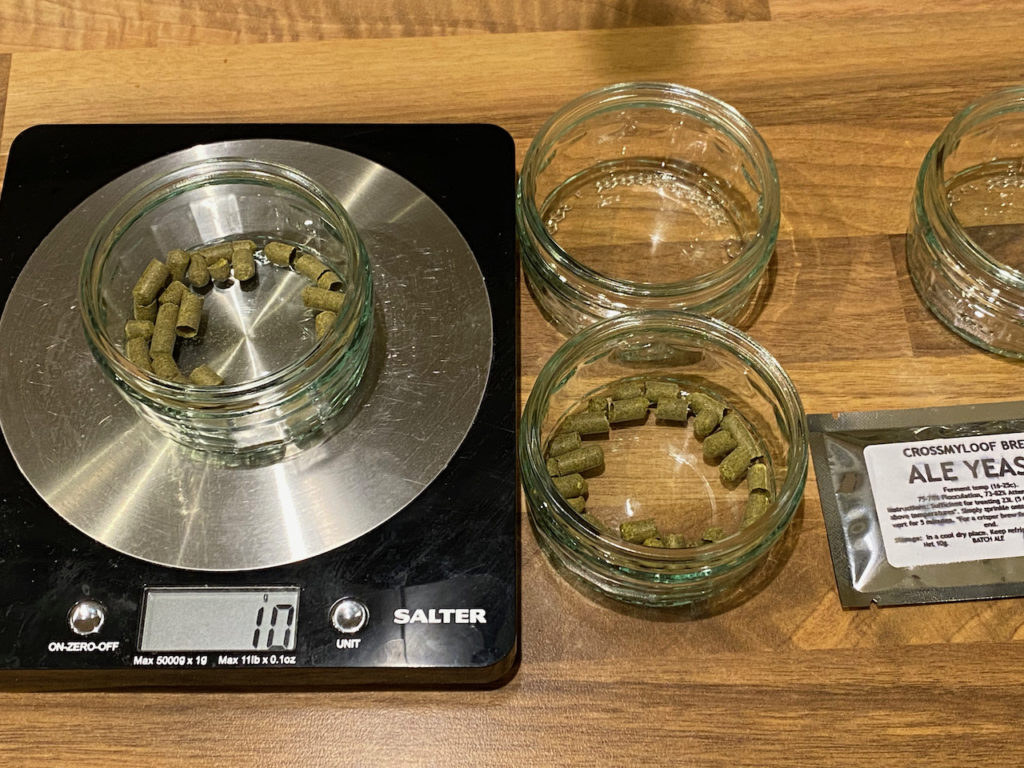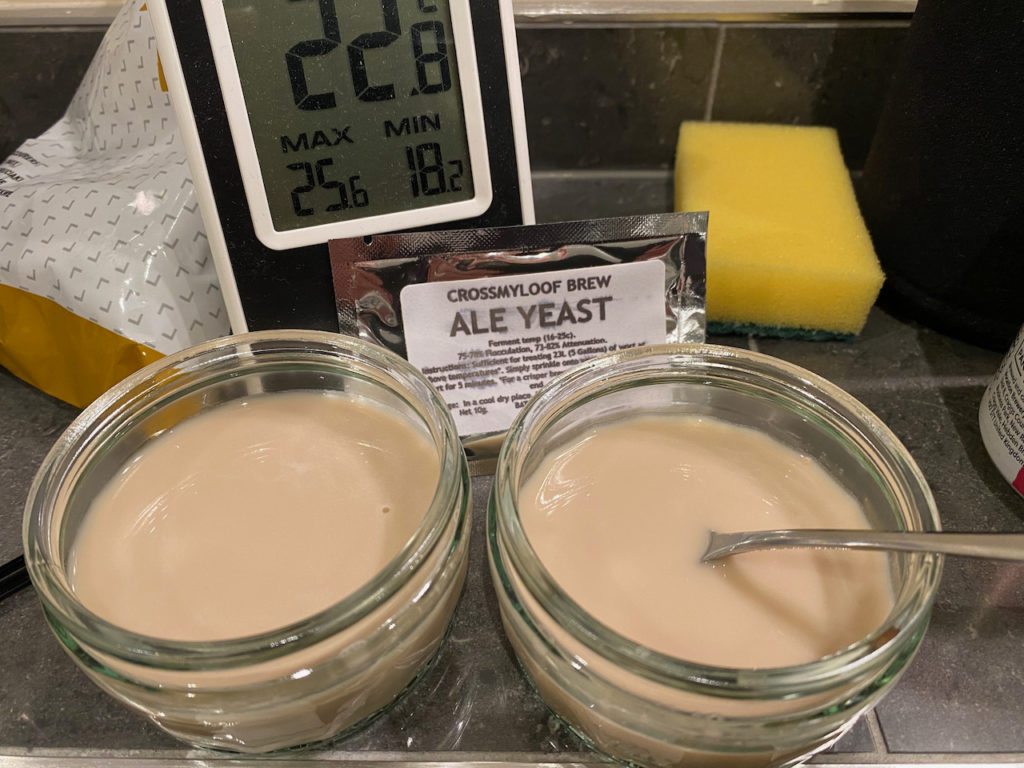Been a long afternoon, but I’ve finally taken a step further towards true brewing with my first extract attempt, fingers crossed this works out.
The Ingredients
- Tesco Ashbeck bottled water, around 9 litres
- 1.2 kg Mangrove Jack’s light LME (i.e. 1 whole bag)
- 20g Cascade hop pellets (planning to dry-hop one FV later)
- 10g ale yeast
The Plan
- Add half the LME to large pot, top up to 4 litre mark with water
- Heat to around 90 ℃ while stirring
- Throw in 6g Cascade hops and start 45 minute timer, maintain temperature
- When 15 minutes remain, add another 6g Cascade, maintain temperature
- Fill fermentation vessel with 2 litres ice cold water
- Hydrate 5g ale yeast according to manufacturer’s instructions
- When the timer’s done, turn off heat and mix in the rest of the LME, transfer immediately to FV
- Top up to 8 litre mark with hot / cold water to achieve pitch temperature of 18 or 19 ℃
- Stir vigorously for 2 or 3 minutes, take OG reading – should be around 1.044 according to calculator
- Add the hydrated ale yeast, fit lid and airlock, leave at 18 or 19 ℃ for 10 days
Brew Notes
Having a plan is all very well, here’s what really happened. These notes were made on-the-fly and I’ve not had a chance to tidy them up, maybe I never will. Bit tired right now.
- Noticed that Brewer’s Friend recipe shows Cascade as having 7% Alpha Acids, but mine are labelled 4.9%. When I changed the percentage on BF I was too low, so I altered the 45 and 15 minute drops to 10 g each instead of 6 g each.
- Hops added bang on 90 ℃ and the brew turned green and threatened to foam, but settled down again with stirring
- Going to pitch 2 x 3g Ale Yeast instead of 5g since I’m using two Ashbeck FVs instead of a single vessel. Instructions say to soak yeast in clean container at fermentation temperature using previously boiled water. Wonder how much yeast I’ll lose since it’ll be a sticky mess instead of an easily pourable sand.
- Added the remaining 600g LME at the 5 minute stage, temperature dropped to 88.5 ℃ but recovered for the remaining time.
- Prepped cool bucket with about 2 litres cold water, poured in boil – 94.6 ℃. Topping up to 8 litres took a whole 5 litre bottle of Ashbeck, did I really lose more than a litre of water in boil?!?
- Even with 5 litres of near-freezing water we’re still too hot at 39 ℃ so I’m dropping this bucket inside a larger one filled with cold water.
- 15 minutes on and I’ve only dropped 10 ℃. Off to prep the yeast.
- Digital scales not registering anything as I add the yeast to the two ramekins of previously boiled water, presently at 19℃. Poured most of a 10g bag into one before I realised, tried to correct by emptying the remainder of the bag into the other ramekin and then visually evening it out, which is nearly impossible since it’s a grey sticky mess now. Just going to hope for the best and cross my fingers – 5g of yeast (give or take) per 4 litre FV is quite a lot.
- Bucket’s still at nearly 30 degrees, way too hot for the yeast. Removed it from the ice bath and decanted into the two 5 litre FVs, the latter of which may have received more hop sediment than the first despite stirring beforehand. I used a funnel instead of the bottling wand, at least both brews are well and truly aerated now. Individual ice baths while I measure SG from the sample collected from the bucket before separating.
- Gravity comes in at 1.044 – bang on as predicted by the recipe builder. Impressive!
- Yeast pitched at 21 ℃ and not too difficult, since most of it had dissolved completely in the ramekins and could be poured into the FVs via a funnel, rinsed out using a splash of wort and the turkey baster.
- Both vessels are using my new airlocks secured with grommets rather than the glued-in bungs I used last time, but at least one of them is leaking as I can see the levels equalise on both sides when I squeeze and release the sides of the bottle. I’ll have a go a drilling some fresh tops tomorrow to see if I can get a better seal for the grommets.
Lessons Learnt
- Get better at preparing / estimating amount of cold water needed – shouldn’t need to chill with another vessel when there’s a dedicated freezer and plenty of bottled water available.
- Get some decent scales! Need to be able to measure hops and especially yeast with better accuracy. (done)






